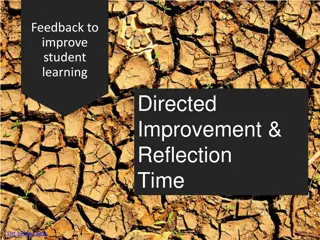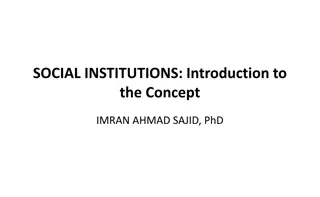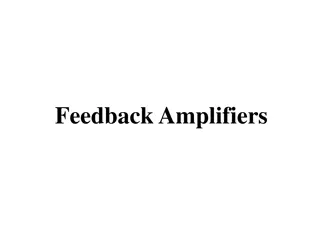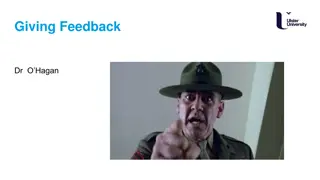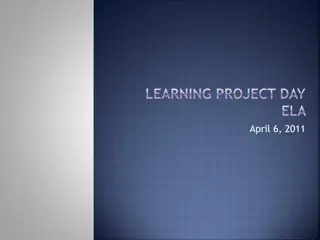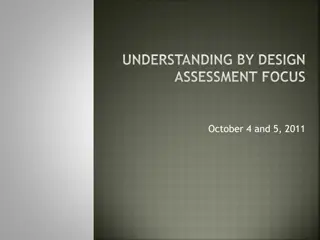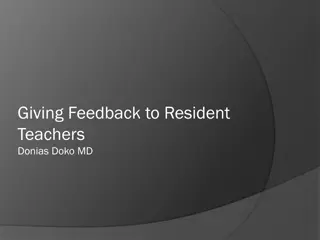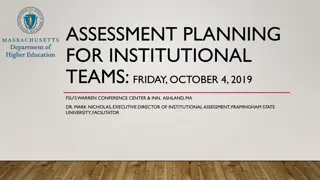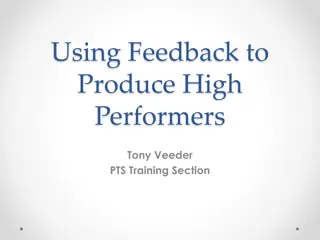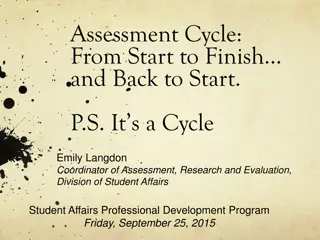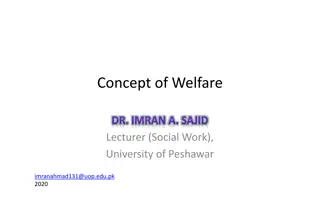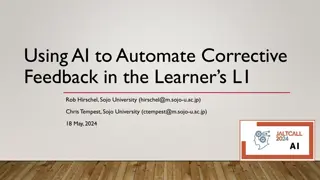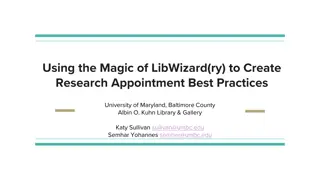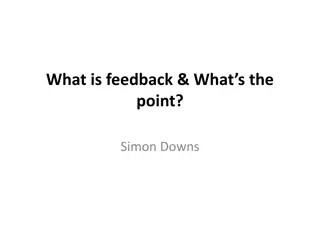Assessment and Feedback Practices in Education Institutions
Assessment and feedback practices in various educational institutions involving teachers and students are highlighted. The process includes interventions during learning, marking methods, feedback mechanisms, and the role of marking in planning and student assessment. The importance of marking for informing next steps, demonstrating student progress, and providing personalized learning experiences is emphasized.
Download Presentation

Please find below an Image/Link to download the presentation.
The content on the website is provided AS IS for your information and personal use only. It may not be sold, licensed, or shared on other websites without obtaining consent from the author. Download presentation by click this link. If you encounter any issues during the download, it is possible that the publisher has removed the file from their server.
E N D
Presentation Transcript
Who was involved? 0 Angela Amankwah, Loughborough, Year 2 0 Lisa Gray, Loughborough, Year 5 0 Olivia Tadrous, Hillmead, Year 4 0 Nicola Haywood Roye, St Johns Angell Town, Year 1 0 Sarah Wordlaw, Christ Church Primary SW9, Year 4/5
Marking an overview In Class Marking Christ Church Intervention at the point of learning, visible progress should be seen after the intervention. 80% of class will have an intervention per lesson by either teacher or TA. St John Angell Town Teachers and TAs mark 8 books each, rest self-assessed Every child has their book marked by teacher, TA peers and self per week. Hillmead All marking completed by Teachers, three teachers per year group. Responding to marking sessions with teacher. Loughborough Intervening conversations with individuals or groups of children, particularly in sets. Lots of self-assessment in lessons with sentence starters I have learned to My next step is . (KS2) Teacher marking and feedback given to children, who then respond in next session. Next step marking in class to allow children to make more progress during lessons. (KS1) Oral feedback in the lesson. http://t2.gstatic.com/images?q=tbn:ANd9GcSVc4N5dzn2_f8HHtwcndszNbU5llVeIAWQGSjVrWIW6YUj_XM2:4.bp.blogspot.com/-7PMz47QtU7A/UkCuGAYSLQI/AAAAAAAAA1E/HjfL_0ggzAs/s1600/Marking1.jpg
Marking at Present in BLC Why do you mark? 0 To inform next steps. 0 To show children their value! 0 So that children receive feedback as to how successful they have been at a task or what their next steps should be. 0 To inform my planning and indicates whether children have understood learning. 0 Because OFSTED will look at it! http://t2.gstatic.com/images?q=tbn:ANd9GcSVc4N5dzn2_f8HHtwcndszNbU5llVeIAWQGSjVrWIW6YUj_XM2:4.bp.blogspot.com/-7PMz47QtU7A/UkCuGAYSLQI/AAAAAAAAA1E/HjfL_0ggzAs/s1600/Marking1.jpg
Marking at Present in BLC What place does marking have within your overall assessment of the children? 0 Mostly used to inform my planning! 0 It can contribute to overall assessment particularly when children are able to respond to marking, because then the learning becomes personalised & you are able to extend and give challenge to learning; circumstances and evidence such as this feed into teacher assessment. 0 Good for diagnostic marking. 0 It can help towards making a judgement of progress. 0 Varies from subject to subject. http://t2.gstatic.com/images?q=tbn:ANd9GcSVc4N5dzn2_f8HHtwcndszNbU5llVeIAWQGSjVrWIW6YUj_XM2:4.bp.blogspot.com/-7PMz47QtU7A/UkCuGAYSLQI/AAAAAAAAA1E/HjfL_0ggzAs/s1600/Marking1.jpg
Marking at Present in BLC What areas do you mark the most? 0 Numeracy, literacy. When do you mark the most; in class time or after school? 0 After school (occasionally at home!) 0 Sometimes during the lesson, particularly if children have either completed their work or is struggling. 0 In maths I can sometimes mark the work of the group that I am working with, during the lesson. http://t2.gstatic.com/images?q=tbn:ANd9GcSVc4N5dzn2_f8HHtwcndszNbU5llVeIAWQGSjVrWIW6YUj_XM2:4.bp.blogspot.com/-7PMz47QtU7A/UkCuGAYSLQI/AAAAAAAAA1E/HjfL_0ggzAs/s1600/Marking1.jpg
Marking at Present in BLC What types if marking do you incorporate into your assessment; teacher, TA, peer or self? 0 All of the above! 0 Mainly teacher and self assessments. http://t2.gstatic.com/images?q=tbn:ANd9GcSVc4N5dzn2_f8HHtwcndszNbU5llVeIAWQGSjVrWIW6YUj_XM2:4.bp.blogspot.com/-7PMz47QtU7A/UkCuGAYSLQI/AAAAAAAAA1E/HjfL_0ggzAs/s1600/Marking1.jpg
Marking at Present in BLC Do you feel marking is an effective assessment tool and use of your time? 0 If it is completed in a timely manner, so that children can respond and see it, and you can assess learning, then yes. 0 If it is related back to children s targets and they get a chance to check targets against the work they ve completed, then it can be extremely helpful. 0 Deep marking of specific work is effective; but marking of every piece to the same level isn t. http://t2.gstatic.com/images?q=tbn:ANd9GcSVc4N5dzn2_f8HHtwcndszNbU5llVeIAWQGSjVrWIW6YUj_XM2:4.bp.blogspot.com/-7PMz47QtU7A/UkCuGAYSLQI/AAAAAAAAA1E/HjfL_0ggzAs/s1600/Marking1.jpg
Marking at Present in BLC Do you feel marking is an effective assessment tool and use of your time? 0 Sometimes, I find looking at their work is more important than marking to plan next steps & interventions e.g who needs to work with an adult or what gaps to fill. I do think I could use more visuals e.g. stickers, stars, smiley s rather than writing comments. (Year 2) 0 In Year One it can be meaningless, particularly if a child can t read it and you can t get the chance to read it to them. http://t2.gstatic.com/images?q=tbn:ANd9GcSVc4N5dzn2_f8HHtwcndszNbU5llVeIAWQGSjVrWIW6YUj_XM2:4.bp.blogspot.com/-7PMz47QtU7A/UkCuGAYSLQI/AAAAAAAAA1E/HjfL_0ggzAs/s1600/Marking1.jpg
Marking an overview After Class Marking/Peer and Self Marking Loughborough More detailed marking for extended writing with a focus on redrafting and editing (KS2). Marking informs planning; whether to move on to the next topic or continue (KS1). Hillmead After double-write and double-maths lessons, children are set next steps based on individual targets. Children redraft writing with edited parts. Sentence starters given to children to self and peer assess their work from KS1, so they are fluent and confident by KS2 in assessing work. Christ Church Detailed next steps; pushing children on to redraft, rethink and edit work to continue progress. St John s Angell Town After school marking in KS1, give children time to respond to marking. Use of sticky note tabs to show children where to respond. http://t2.gstatic.com/images?q=tbn:ANd9GcSVc4N5dzn2_f8HHtwcndszNbU5llVeIAWQGSjVrWIW6YUj_XM2:4.bp.blogspot.com/-7PMz47QtU7A/UkCuGAYSLQI/AAAAAAAAA1E/HjfL_0ggzAs/s1600/Marking1.jpg
What have we learned? 0 Next steps within a lesson with the child 0 More peer marking with given sentence starters/talk frames 0 Recording interventions within lessons 0 Useful being able to go to another setting 0 More self-marking is useful to allow children to take ownership over their learning 0 Ensure that all staff are aware of up-to-date polices http://t0.gstatic.com/images?q=tbn:ANd9GcRCmDjkL8XYw7WZ-OGxF-JkQTe9Sw8Ho0jMq6LLbjfo-KIgqctO:rack.2.mshcdn.com/media/ZgkyMDEyLzEyLzA0L2VjLzNzb2NpYWxsZWFyLmRtaC5qcGcKcAl0aHVtYgkxMjAweDYyNyMKZQlqcGc/f4516c15/a77/3-social-learning-trends-to-watch-in-2012-c84d534271.jpg
Henry Cavendish - 0 Have generic target sheets at the front of Maths/ English books and work towards these and teacher's tick off when they feel secure. 0 Teacher's must mark all Maths, English, Homework and Topic (although topic is less thorough and only requires minimal feedback) 0 Children respond to marking in purple pen from KS1-KS2. 0 Response to marking is planned into the school day, usually prior to the next lesson 0 They don't let TA's mark and strongly disagree with this as a principle. 0 The children have a post it note with a target that the pupil wants to achieve. They move this along the pages of their book and then replace when they perceive they have met it. The teacher doesn't necessarily sign this off. 0 Peer marking and self marking also take place although most teacher marking was most evident.
Next Steps 0 Visits later on in the year, to see the effect of what we ve taken from each other s schools 0 Members of task force to feedback in a staff meeting?
Questions for Future 0 Do we need to provide TAs with more training to mark confidently? 0 Evidence of Intervention who is the evidence for? 0 The pressures of KS1 vs KS2 marking what is the difference? http://t0.gstatic.com/images?q=tbn:ANd9GcRp_abpycyQO9qYFO_FU6La-IxgWcXZw1KnMekq3cg-8gBVlwjZ:blog.intuyuconsulting.com.au/wp-content/uploads/2013/06/Stop-Thinking.jpg

 undefined
undefined






